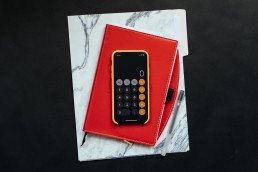What you need to know about UX and Chinese customers
As a Western brand marketing in China, you already know that this vast market is driven by cutting-edge technology and that Chinese customers are the original Netizens, with over 915,000 people in China having bought products or services online as of December 2023.
You will also know that it’s essential to have a smartphone-optimised and localised website and a broader digital ecosystem that links together your Chinese social media platforms, website and apps and any other digital channels you use for your brand’s marketing delivery. (98% of adults in China own a smartphone and use it as their preferred means of accessing the internet.)
However, one area that tends to be less familiar to Western marketers is Chinese UX. In the same way that Chinese is so very different from Western languages, Chinese UX also operates in a very different way, with Chinese customers wanting very different things. Let’s take a closer look.
What is UX anyway?
UX stands for User Experience and it broadly defines how user-friendly any digital product is – whether that’s a website, app, digital product or any online interaction between your brand and the target customer. The UX captures every element that your user experiences when they engage with you online, from the colours you choose to the text type and size you use, and from the call-to-action buttons and their placement, to the use of localised payment systems.
What Chinese Customers Expect from UX
Chinese UX requires a high degree of understanding and optimisation to work well. Let’s consider each main element in turn:
1. Language
The Chinese language is a ideographical writing system, with characters that use varying strokes and rectangular shapes. The language is also highly symbolic and contextual and it’s very easy to change the entire meaning of a word, simply by adjusting a stroke. This means that a font size of at least 12 should be used for legibility. (The font decision itself is also less flexible than in the West, as far fewer Chinese fonts are available.) It’s also important to know that there are no italics, capital letters or spacing in Chinese characters, which use less space on digital pages than English words.
However, although Chinese characters require less space, Chinese customers want to see a packed page! In the West, customers prefer minimalist web pages, but in China, customers like to see lots of detailed information to make deeply informed decisions. This is also because Chinese customers tend to browse rather than search. In China, a minimalist page is seen as lacking, and the ethos tends to be ‘more is better‘.
2. Design
Chinese customers love busy interfaces and high-context products with plenty of information and a design which can look cluttered to Western eyes. They love animations, gamification, social media integration and more complex displays. It’s also important to know that Chinese culture is collectivist, rather than individualistic (as it is in the West.) This means incorporating vital elements such as online chat and customer reviews, as well as social media links. Bear in mind that some of the most popular sites in China are apps which deliver a huge range of services and activities in one space, such as WeChat which allows users to consume content, play games, shop, bank online and hail a cab in the one app. It’s interesting to note that Chinese customer also have fewer concerns about digital privacy, which means they are happy to share their information within these super-apps.
Naturally, your website must operate perfectly on smartphones, preferably with a mobile-first design. Most Chinese customers carry out their online lives via their phones. Top tip – QR codes are still very popular in China, and most customers are used to entering their phone numbers or social media log-ins to register for sites (rather than their email addresses, which are more commonly used in the West.)
3. Colour
In China, colours are used far more symbolically than in the West, and often with different superstitious associations. For example, red, orange and yellow are linked to wealth, luck and happiness in China and are considered very positive. However, white is traditionally associated with death, whereas in the West it is associated with innocence and purity. Chinese websites and apps can seem to be a little chaotic to Western eyes because they tend to use a broad array of colours, but these speak to the Chinese culture with its belief systems, and positively deliver a great Chinese UX.
4. Firewall Considerations
In China, the internet is censored, so many global apps and websites are blocked, including Facebook, Google, Twitter, YouTube, Vimeo and many more. This means focusing your SEO offers on Baidu; the local search engine instead. Baidu is delivered and managed in Chinese, which requires access to native language abilities.
Getting Expert Help
The key message here is that successful digital marketing in China means going beyond transaction to true localisation. Chinese UX best practices are distinct, varied and particular to this market. This is a specialist area which is constantly evolving, and optimisation work should be detailed and ongoing, with regular reporting to assess where on-page adjustments and improvements can be made.
Many Western brands will choose to use the services of a digital marketing agency to make this process as easy and effective as possible, and to maximise their marketing budget ROI. Market Me China can provide you with expert Chinese UX services as part of our broader Chinese digital marketing services. Our team combines professional digital marketing skills with native language abilities to offer excellent results, which we measure and report against for our clients.
Whether you are looking to launch or build your Western brand in China, our team can help you to enjoy success quicker, more easily and with better leverage for your budget. Please contact us in the first instance for a no-obligation chat about your needs and we will be delighted to assist.
Related Posts
27th May 2020





